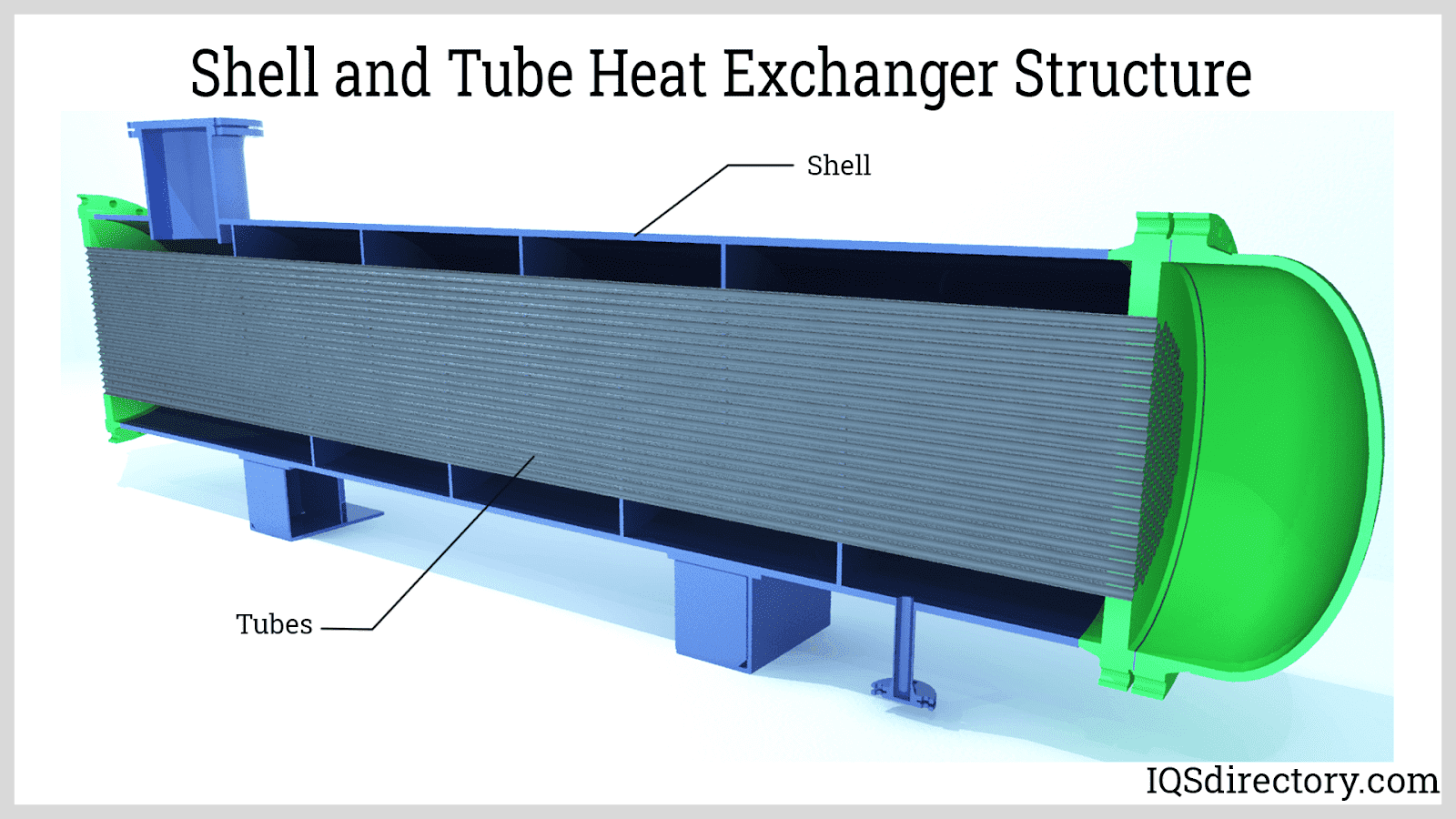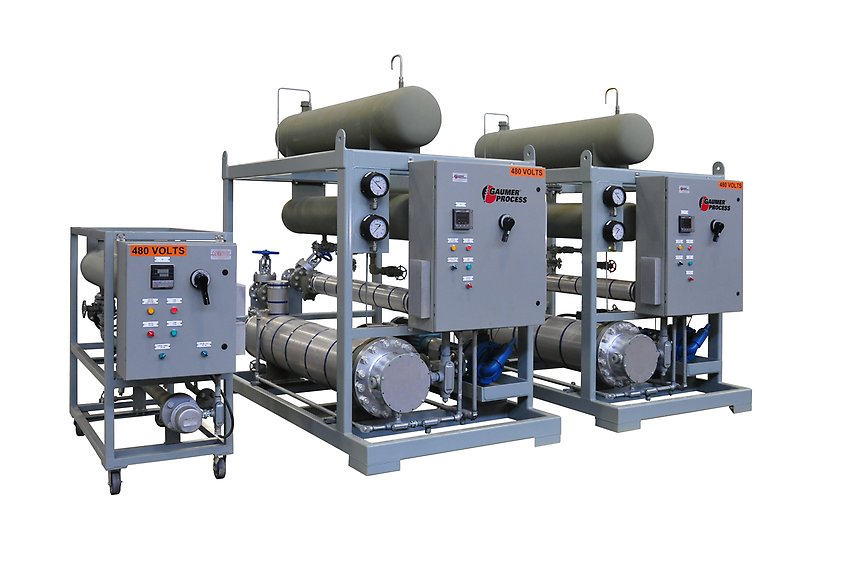Technologies in Heat Transfer Equipments: What You Required to Know for Ideal Efficiency
Innovations in Heat transfer systems are transforming efficiency across numerous sectors. Advanced products like graphene and nanofluids assure considerable renovations in thermal conductivity. The assimilation of IoT and device discovering provides possibilities for real-time surveillance and enhanced energy effectiveness. The landscape of thermal administration is rapidly progressing. Comprehending these developments is essential for accomplishing ideal system efficiency and sustainability in the future. What particular advancements are shaping this makeover?
Emerging Products for Boosted Heat Transfer

Advanced Heat Exchanger Layouts
While traditional Heat exchangers have actually served their purpose in various applications, progressed styles are now arising to fulfill the raising demands for effectiveness and efficiency. These ingenious designs, such as plate, shell-and-tube, and finned-tube Heat exchangers, include enhanced surface area areas and boosted flow patterns to boost thermal transfer prices. Additionally, compact layouts enable lowered room demands without compromising effectiveness. Advanced materials, such as composites and corrosion-resistant alloys, furthermore boost durability and performance under severe conditions. Simulation modern technologies and computational fluid dynamics are increasingly utilized to fine-tune these styles, guaranteeing peak Heat transfer characteristics. As industries look for to decrease power intake and optimize outcome, the adoption of innovative Heat exchanger designs is essential in achieving these objectives.
The Function of Nanotechnology in Heat Transfer
Nanotechnology plays a crucial function in boosting thermal conductivity within Heat transfer systems. By controling materials at the nanoscale, researchers have actually achieved considerable enhancements in power efficiency. These innovations not just optimize performance however also add to more sustainable power services.
Boosted Thermal Conductivity
Considerable improvements in thermal conductivity have emerged through the application of nanotechnology, transforming Heat transfer systems across various industries. By incorporating nanoparticles right into Heat transfer liquids and materials, scientists have actually attained amazing increases in thermal conductivity. These nanoparticles, such as carbon nanotubes, graphene, and steel oxides, improve the Heat transfer residential or commercial properties due to their high area and unique thermal qualities. The resulting compounds exhibit improved performance in applications ranging from electronics cooling down systems to renewable power technologies. The ability to tailor the dimension, shape, and composition of nanoparticles enables for maximized thermal management options. As an outcome, nanotechnology continues to play an essential function in the development of much more reliable and reliable Heat transfer systems, leading the way for boosted commercial applications.
Power Effectiveness Improvements

Combination of IoT in Heat Transfer Solutions
The assimilation of IoT in Heat transfer systems presents the application of clever sensors that enhance operational effectiveness. These sensors enable real-time data surveillance, permitting prompt modifications and optimizations. This technological advancement has the possible to significantly enhance efficiency and power monitoring in Heat transfer applications.
Smart Sensors Execution
As Heat transfer systems advance, the integration of wise sensors with the Web of Things (IoT) has actually become a transformative technique. These sensing units allow real-time surveillance of stress, circulation, and temperature level rates, improving system efficiency and integrity. By collecting and transmitting information, they blog here promote proactive maintenance, minimizing the risk of system failings. In addition, wise sensing units add to energy savings by refining operational parameters based on ecological conditions. Their ability to evaluate abnormalities and fads permits educated decision-making, making certain peak performance of Heat transfer systems. As industries increasingly adopt this modern technology, the implementation of smart sensing units stands to transform how Heat transfer systems are managed, paving the method for higher sustainability and improved efficiency outcomes.
Real-Time Data Tracking
Exactly how can real-time data checking enhance the performance of Heat transfer systems? By integrating Net of Things (IoT) modern technology, Heat transfer systems can take advantage of continual data collection from wise sensors. This real-time surveillance enables for prompt evaluation of stress, temperature level, and flow prices, making it possible for drivers to recognize inefficiencies without delay. As a result, modifications can be made you can check here to maximize performance, minimize energy intake, and prolong equipment life expectancy. Additionally, anticipating upkeep can be carried out, lessening unforeseen downtime and costly repairs. The capacity to visualize performance metrics with control panels boosts decision-making, promoting an aggressive technique to system monitoring. Inevitably, real-time information keeping track of not only boosts functional efficiency yet also adds to sustainability goals within commercial processes.
Power Efficiency and Sustainability Trends
Power performance and sustainability fads are reshaping the landscape of Heat transfer systems, driving innovation and conformity across different industries. Organizations are increasingly focusing on energy-efficient designs to reduce functional costs and decrease environmental impacts. The assimilation of renewable resource sources is ending up being much more widespread, allowing Heat transfer systems to operate sustainably while fulfilling regulatory demands. In addition, innovations in products and innovations promote lower energy intake and enhance general performance. Lifecycle evaluations are likewise obtaining grip, permitting firms to examine the environmental impact of Heat transfer systems from production to disposal. This concentrate on sustainability not just supports corporate duty but additionally placements organizations competitively in a market where consumers progressively favor eco-friendly options. Energy effectiveness and sustainability continue to be vital factors to consider for future advancements in Heat transfer innovation.
Advancements in Thermal Administration Solutions
While the need for efficient Heat transfer remains to climb, developments in thermal administration solutions are arising to deal with both efficiency and sustainability challenges. Advanced products, such as phase modification materials and nanofluids, are being created to boost Heat transfer effectiveness - DVS Heat Transfer Systems. These materials enhance thermal conductivity and permit for much better temperature level law in numerous applications. In addition, technologies like active thermal control systems are acquiring traction, making it possible for real-time changes to manage Heat circulation efficiently. These systems contribute to energy cost savings and minimize the environmental impact of thermal procedures. Furthermore, the assimilation of IoT in thermal administration assists in monitoring and predictive maintenance, guaranteeing enhanced performance and durability of Heat transfer systems. On the whole, these advancements stand for considerable strides towards even more lasting thermal management practices
Future Instructions in Heat Transfer Technology
Arising improvements in thermal monitoring solutions indicate an encouraging future for Heat transfer innovation. Researchers are progressively focusing on creating products with exceptional thermal conductivity and enhanced power efficiency. Advancements such as nanofluids, which consist of put on hold nanoparticles, offer significant renovations in Heat transfer efficiency. Furthermore, the assimilation of smart products that adapt to varying temperature level problems is gaining traction, permitting for even more receptive and efficient systems. The surge of additive production strategies is likewise making it possible for the layout of complex Heat exchanger geometries that maximize fluid circulation. Additionally, the application of artificial intelligence algorithms is prepared for to revolutionize the optimization of Heat transfer systems, helping with anticipating maintenance and performance enhancement. Collectively, these improvements are positioned to change the landscape of Heat transfer modern technologies in various markets.

Frequently Asked Concerns

How Do I Select the Right Heat Transfer System for My Application?
Picking the right Heat transfer system entails evaluating application requirements, consisting of temperature level varieties, liquid residential or commercial properties, and performance needs. Evaluating system types, upkeep factors to consider, and cost-effectiveness likewise plays a vital duty in making an educated decision.
What Are the Maintenance Demands for Advanced Heat Exchangers?
Maintenance needs for innovative Heat exchangers normally consist of regular evaluations, monitoring for leakages, cleansing of surfaces, and guaranteeing excellent circulation prices. Sticking to producer standards warranties reliable procedure and prolongs the devices's life expectancy.
Exactly How Do Ecological Elements Influence Heat Transfer Effectiveness?
Ecological elements substantially affect Heat transfer efficiency. Variants in temperature level, humidity, and air movement effect thermal conductivity and convective Heat transfer, ultimately affecting system performance and requiring consideration during the style and procedure of Heat transfer systems.
What Safety Standards Put On Heat Transfer Systems?
Security criteria for Heat transfer systems commonly consist of standards from companies such as ASME and ASTM. DVS Heat Transfer reference Systems. These standards address materials, style, and operational methods to ensure reliability, efficiency, and security versus dangers in various applications
How Can I Troubleshoot Usual Heat Transfer System Issues?
Fixing usual Heat transfer system concerns involves inspecting for leakages, making sure appropriate liquid flow, evaluating insulation stability, and validating temperature level differentials. Recognizing these factors can assist preserve system performance and stop more issues.
Nanotechnology plays an essential role in boosting thermal conductivity within Heat transfer systems. Significant improvements in thermal conductivity have actually emerged via the application of nanotechnology, transforming Heat transfer systems throughout numerous industries. Innovations in thermal conductivity with nanotechnology have paved the way for impressive renovations in power performance within Heat transfer systems. Power efficiency and sustainability trends are reshaping the landscape of Heat transfer systems, driving innovation and compliance across various markets. The assimilation of IoT in thermal management helps with surveillance and anticipating upkeep, guaranteeing maximized efficiency and durability of Heat transfer systems.